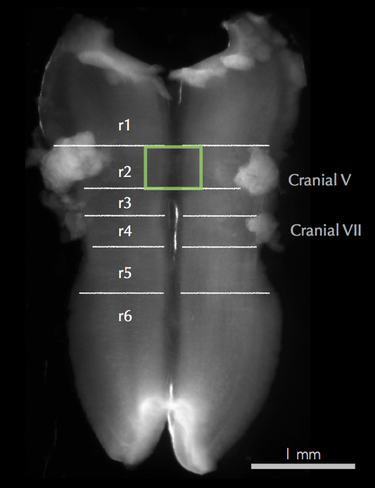We study spontaneous activity in embryonic brainstem. Spontaneous electrical activity controls many aspects of nervous system development, during circuit formation within the brain. We found that at embryonic day (E)11.5, spontaneous waves of activity propagate across the hindbrain. The lab initially described this phenomenon using [Ca2+]i imaging techniques, and we have verified spontaneous electrical events using patch clamp. Additional work in our lab has identified midline serotonergic raphe neurons as primary pacemakers of this activity. We continue to study how propagating waves of spontaneous activity regulate developing serotonergic and dopaminergic neurons.
Bright-field image of E11.5 hindbrain, showing former rhombomeres (r),
cranial sensory ganglia, and initiation zone (InZ) for spontaneous
events (green box).
cranial sensory ganglia, and initiation zone (InZ) for spontaneous
events (green box).
